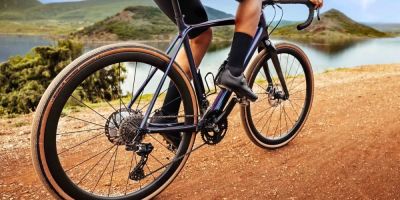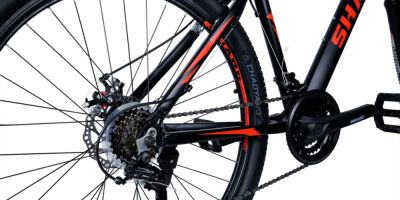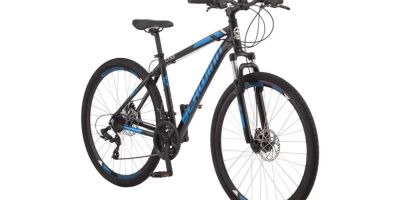How to Improve Your Climbing on a Road Bike
Climbing hills on a road bike can be one of the most challenging yet rewarding experiences for any cyclist. As someone who has spent countless hours on both short climbs and long, grueling ascents, I know firsthand how difficult it can be to improve your climbing ability. With the right techniques, training, and mindset, you can not only make climbing easier but also enjoy the process of getting better over time.

Conte's Bike Shop
3449 Wilson Blvd, Arlington, VA 22201, USA
1. Focus on Your Bike Setup
The first step in improving your climbing ability starts with ensuring that your bike is set up for efficiency. A well-maintained road bike can make a huge difference in how you handle steep inclines. One important factor to consider is your bike's gearing. Make sure you have a wide range of gears to accommodate different slopes. A compact crankset or a 50/34 chainring combined with an 11-32 cassette can provide you with enough gears to tackle almost any climb with ease.
Additionally, consider the weight of your bike. While modern road bikes are typically lightweight, every ounce counts when climbing. If you’re looking to shed a few grams, swapping out heavier components like the wheels or saddle might give you an edge. However, remember that balance is key, and you don’t want to sacrifice comfort for weight savings.

Bicycle Barn LLC
839 Reading Rd, East Earl, PA 17519, USA
2. Build Your Endurance and Leg Strength
Climbing hills requires both cardiovascular endurance and muscular strength. To improve your climbing, you need to focus on developing both. Start by incorporating longer, sustained efforts into your training. This can be done by finding a long hill and riding up it at a steady pace, gradually increasing the time spent climbing. By doing this, you'll increase your stamina and learn how to pace yourself over extended periods.
In addition to endurance, leg strength is essential for powerful climbing. Try including strength training exercises into your workout routine, such as squats, lunges, and leg presses. These exercises target the quads, hamstrings, and glutes, which are heavily engaged during climbs. Incorporating these into your regimen will provide more power when you push on the pedals, particularly during steep sections.
3. Perfect Your Pedal Stroke Technique
Your pedal stroke technique plays a significant role in how efficiently you climb. Many cyclists fall into the habit of pushing harder on the downstroke without fully engaging the upstroke. A smooth, circular pedal stroke is much more efficient, especially when tackling long climbs.
To improve your pedal stroke, think of each pedal revolution as a smooth circle. Use the downstroke to generate power, but also focus on pulling up on the upstroke. This helps engage more muscle groups and reduces the strain on your quads. To practice, you can try riding with a slightly higher cadence and work on keeping your pedaling smooth and efficient.
4. Ride with a Higher Cadence
Speaking of cadence, riding with a higher cadence (measured in revolutions per minute or RPM) can make climbing more efficient and less taxing on your body. Many cyclists make the mistake of pushing big gears on climbs, thinking it will generate more power. However, this technique is typically less sustainable and can lead to fatigue faster.
A higher cadence—around 80-90 RPM—engages more of your cardiovascular system and keeps your muscles fresh for longer. To practice this, use a slightly easier gear and focus on spinning the pedals quickly, even when you’re on an incline. Over time, your body will adapt, and you’ll be able to climb more efficiently without as much muscle strain.
5. Focus on Nutrition and Hydration
As with any sport, fueling your body properly is essential for performance, especially on long climbs. Maintaining good nutrition and hydration throughout your ride is key to keeping your energy levels up. Make sure to drink water regularly and eat small snacks every 30-45 minutes to maintain energy levels. Energy gels, bars, or bananas are great options to keep you fueled without weighing you down.
It’s also important to focus on post-ride nutrition. After a tough climb, your muscles need recovery time and proper nutrients to rebuild. A protein shake or meal with a balance of carbs and protein will help your muscles recover and get you ready for the next climb.
6. Mentally Prepare for the Challenge
Finally, don’t underestimate the power of the mind when it comes to climbing. It’s easy to get discouraged during a long, tough ascent, especially if you feel like you’re not making progress. The key is to break the climb into manageable segments. Focus on reaching the next marker or turn, and don’t think about the entire climb at once. Positive self-talk and maintaining a calm, focused mindset can help you push through the hardest moments.
On top of that, try to embrace the challenge of climbing. Instead of viewing it as a chore, think of it as an opportunity to improve yourself. The more you approach climbing with a positive mindset, the more enjoyable it will become, and the better you’ll perform.
7. Practice, Practice, Practice
Lastly, there’s no substitute for practice. The more you climb, the better you’ll get. Seek out hills of varying gradients and practice riding at different intensities. Over time, your body will adapt, and climbing will become a skill that feels more natural. Keep pushing your limits, and remember that each climb is an opportunity to grow.
Improving your climbing on a road bike takes time, patience, and dedication. With the right training, mindset, and techniques, you’ll soon find yourself conquering even the toughest climbs with ease. Whether you're preparing for a race, a challenging group ride, or just want to enjoy your cycling adventures more, these tips will set you on the path to success.










